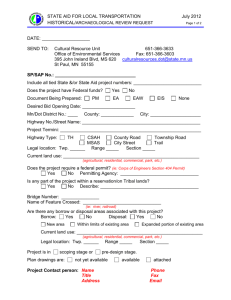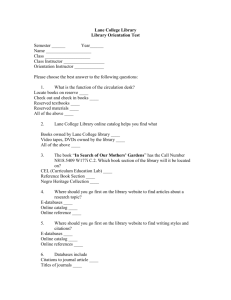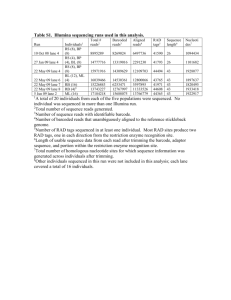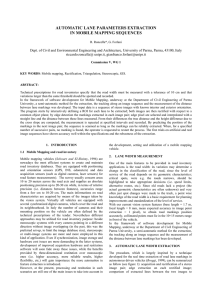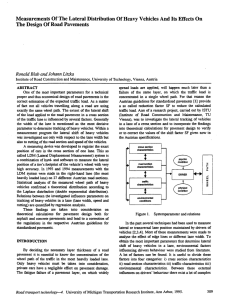Fieldwork Recording Form
advertisement
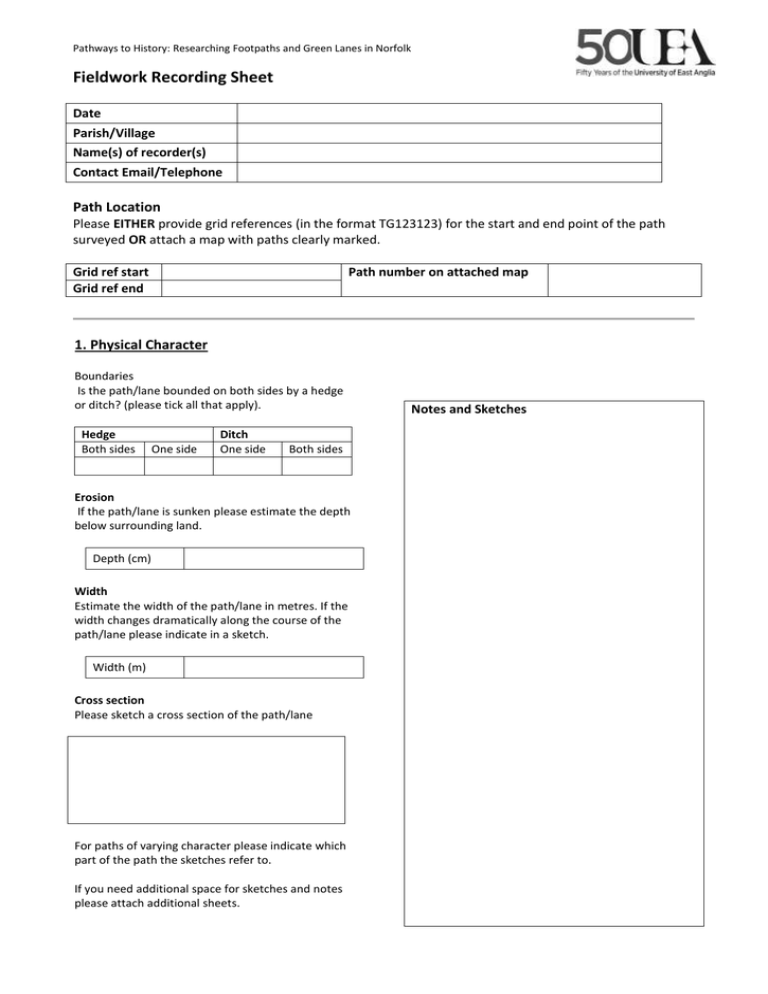
Pathways to History: Researching Footpaths and Green Lanes in Norfolk Fieldwork Recording Sheet Date Parish/Village Name(s) of recorder(s) Contact Email/Telephone Path Location Please EITHER provide grid references (in the format TG123123) for the start and end point of the path surveyed OR attach a map with paths clearly marked. Grid ref start Grid ref end Path number on attached map 1. Physical Character Boundaries Is the path/lane bounded on both sides by a hedge or ditch? (please tick all that apply). Hedge Both sides One side Ditch One side Both sides Erosion If the path/lane is sunken please estimate the depth below surrounding land. Depth (cm) Width Estimate the width of the path/lane in metres. If the width changes dramatically along the course of the path/lane please indicate in a sketch. Width (m) Cross section Please sketch a cross section of the path/lane For paths of varying character please indicate which part of the path the sketches refer to. If you need additional space for sketches and notes please attach additional sheets. Notes and Sketches Pathways to History: Researching Footpaths and Green Lanes in Norfolk Date Parish/Village Name(s) of recorder(s) Contact Email/Telephone 2. Historical Ecology Trees Please record any significant trees along the lane/path which show evidence of having been pollarded or which have girths greater than 4 metres. Make a note of species, approximate girth and, where possible, please provide an approximate grid reference. Attach additional tree recording sheets if necessary. Distinctive vegetation (optional) Please record any flora of note (e.g. bluebells, primrose, dog’s mercury). Character of hedgerows Please describe the general character of any hedges alongside the path/lane, including: Whether it is species-rich or dominated by a single species Does it appear to be ancient, or recently planted? If there is a ditch alongside the path, which side is the hedge on? Names and Local Traditions Is there a name recorded for the path/lane on the modern map? Do you know of any other locally used names? Are there are local stories or traditions associated with the path/lane? Please return forms to: Dr Sarah Spooner, School of History, University of East Anglia, Norwich, NR4 7TJ s.spooner@uea.ac.uk


